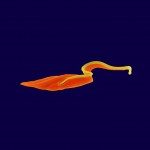Link to Pubmed [PMID] – 32131895
Link to HAL – inserm-02513036
Link to DOI – 10.1186/s13104-020-04977-8
BMC Research Notes, 2020, 13 (1), pp.127. ⟨10.1186/s13104-020-04977-8⟩
OBJECTIVE: In tropical Africa, trypanosomiasis is present in endemic areas with many other diseases including malaria. Because malaria vectors become more anthropo-zoophilic under the current insecticide pressure, they may be exposed to trypanosome parasites. By collecting mosquitoes in six study sites with distinct malaria infection prevalence and blood sample from cattle, we tried to assess the influence of malaria-trypanosomiasis co-endemicity on the vectorial capacity of Anopheles. RESULTS: Overall, all animal infections were due to Trypanosoma vivax (infection rates from 2.6 to 10.5%) in villages where the lowest Plasmodium prevalence were observed at the beginning of the study. An. gambiae s.l. displayed trophic preferences for human-animal hosts. Over 84 mosquitoes, only one was infected by Plasmodium falciparum (infection rate: 4.5%) in a site that displayed the highest prevalence at the beginning of the study. Thus, Anopheles could be exposed to Trypanosoma when they feed on infected animals. No Plasmodium infection was observed in the Trypanosoma-infected animals sites. This can be due to an interaction between both parasites as observed in mice and highlights the need of further studies considering Trypanosoma/Plasmodium mixed infections to better characterize the role of these infections in the dynamic of malaria transmission and the mechanisms involved.




